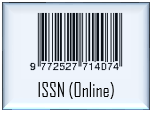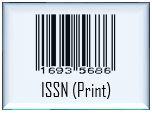Evaluation of Diabetic Wound Healing Activity of Novel Quercetin Topical Preparations
(1) Faculty of Pharmacy, Universitas Sanata Dharma
(2) Faculty of Pharmacy, Universitas Sanata Dharma
(3) Faculty of Pharmacy, Universitas Sanata Dharma
(4) Faculty of Pharmacy, Universitas Sanata Dharma
(*) Corresponding Author
Abstract
Keywords
Full Text:
PDFReferences
Ahmed, O.M., Mohamed, T., Moustafa, H., Hamdy, H., Ahmed, R.R., Aboud, E., 2018. Quercetin and low level laser therapy promote wound healing process in diabetic rats via structural reorganization and modulatory effects on inflammation and oxidative stress. Biomed. Pharmacother., 101:58–73.
Alberti, T.S., Coelho, D., Voytena, A, Pitz, H., de Pra, M., Mazzarino, L., et al., 2017. Nanotechnology: A promising tool towards wound healing. Curr. Pharm. Des., 23(24):3515–28.
Azeem, M., Hanif, M., Mahmood, K., Ameer, N., Chughtai, F.R.S., Abid, U., 2023. An insight into anticancer, antioxidant, antimicrobial, antidiabetic and anti-inflammatory effects of quercetin: A review. Polym. Bull., 80(1):241–62.
Bahloul, B., Bnina, E., Ben, Hamdi, A., Castillo, L., Baccar, D., Kalboussi, N., et al., 2023. Development of a Low-Temperature Process for the Formulation of Nanoemulsion-Gel Encapsulating Essential Oil: Investigation on the Wound Healing Effect. Preprints, 2023080150.
Barroso, A., Mestre, H., Ascenso, A., Simões, S., Reis, C., 2020. Nanomaterials in wound healing: From material sciences to wound healing applications. Nano Sel., 1(5):443–60.
Bashir, M., Ahmad, J., Asif, M., Irfan, M., Ibrahim, A.Y., Asghar, S., et al., 2021. Nanoemulgel, an innovative carrier for diflunisal topical delivery with profound anti-inflammatory effect: In vitro and in vivo evaluation. Int. J. Nanomedicine., 16:1457-72.
Beken, B., Serttas, R., Yazicioglu, M., Turkekul, K., Erdogan, S., 2020. Quercetin Improves Inflammation, Oxidative Stress, and Impaired Wound Healing in Atopic Dermatitis Model of Human Keratinocytes. Pediatr. Allergy. Immunol. Pulmonol., 33(2):69–79.
Burgess, J.L., Wyant, W.A., Abujamra, B.A., Kirsner, R.S., Jozic, I., 2021. Diabetic Wound-Healing Science. Medicina (Kaunas)., 57(10):1072.
Chang, M., 2016. Restructuring of the extracellular matrix in diabetic wounds and healing: A perspective. Pharmacol. Res.,107:243–8.
Chen, J., Qin, S., Liu, S., Zhong K, Jing Y, Wu X, et al., 2023. Targeting matrix metalloproteases in diabetic wound healing. Front. Immunol., 14:1089001.
Darabian, B., Bagheri, H., Mohammadi, S., 2020. Improvement in mechanical properties and biodegradability of PLA using poly (ethylene glycol) and triacetin for antibacterial wound dressing applications. Prog. Biomater., 9:45–64.
Deng, L., Du, C., Song, P., Chen, T., Rui, S., Armstrong, D.G., et al. 2021. The role of oxidative stress and antioxidants in diabetic wound healing. Oxid. Med. Cell. Longev., 2021.
Falanga, V., 2005. Wound healing and its impairment in the diabetic foot. Lancet., 366(9498):1736–43.
Fiume, M.Z., 2003. Final report on the safety assessment of triacetin. Int. J. Toxicol., 22(Suppl.2):1–10.
Ghareeb, MM., 2019. Design and in vitro characterization of a topical nanoemulsion-enriched hydrogel of econazole nitrate. J. Appl. Pharm. Sci., 9(1):51–7.
Garg, A., Aggarwal, D., Garg, S.K., Singla, A., 2002. Spreading of Semisolid Formulations: An Update. Pharm. Technol. 26(9):84–105.
Ghobadi, A., Ahmadi, S.P., Jalilian, M., Abdi, A., Manouchehri, S., 2020. Evaluation of factors affecting the severity of diabetic foot ulcer in patients with diabetes referred to a diabetes centre in Kermanshah. Diabetes, Metab. Syndr. Obes., 2020:693–703.
Greenhalgh, D.G., 2003. Wound healing and diabetes mellitus. Clin. Plast. Surg., 30(1):37–45.
Hazrati, M., Mehrabani, D., Japoni, A., Montasery, H., Azarpira, N., Hamidian-Shirazi, A.R., et al., 2010. Effect of honey on healing of Pseudomonas aeruginosa infected burn wounds in rat. J. Appl. Anim. Res., 37(2):161–5.
Hou, D.D., Zhang, W., Gao, Y.L., Sun, Y., Wang, H.X., Qi, R.Q., et al., 2019. Anti-inflammatory effects of quercetin in a mouse model of MC903-induced atopic dermatitis. Int. Immunopharmacol., 74:105676.
Ilić, T., Pantelić, I., Savić, S., 2021. The implications of regulatory framework for topical semisolid drug products: From critical quality and performance attributes towards establishing bioequivalence. Pharmaceutics., 13(5):710.
Jadhav, R.P., Koli, V.W., Kamble, A.B., Bhutkar, M.A., 2020. A Review on Nanoemulsion. Asian J. Res. Pharm. Sci., 10(2):103–8.
Jangde, R., Srivastava, S., Singh, M.R., Singh, D., 2018. In vitro and In vivo characterization of quercetin loaded multiphase hydrogel for wound healing application. Int. J. Biol. Macromol., 115:1211–7.
Jalilian, M., Ahmadi, S.P., Oubari, S., 2020. Factors related to severity of diabetic foot ulcer: a systematic review. Diabetes, Metab. Syndr. Obes., 13:1835–42.
Kant, V., Jangir, B.L., Sharma, M., Kumar, V., Joshi, V.G., 2021. Topical application of quercetin improves wound repair and regeneration in diabetic rats. Immunopharmacol. Immunotoxicol., 243(5):536–53.
Lesjak, M., Beara, I., Simin, N., Pintać, D., Majkić, T., Bekvalac, K., et al. 2018. Antioxidant and anti-inflammatory activities of quercetin and its derivatives. J. Funct. Foods., 40:68–75.
Li, Y., Yao, J., Han, C., Yang, J., Chaudhry, M.T., Wang, S., et al., 2016. Quercetin, inflammation and immunity. Nutrients., 8(3):167.
McKittrick, L.S., McKittrick, J.B., Risley, T.S., 1949. Transmetatarsal amputation for infection or gangrene in patients with diabetes mellitus. Ann. Surg., 130(4):826.
Namjoshi, S., Dabbaghi, M., Roberts, M.S., Grice, J.E., Mohammed ,Y., 2020. Quality by design: Development of the quality target product profile (QTPP) for semisolid topical products. Pharmaceutics., 12(3):287.
Nastiti, C.M.R.R., Dwiastuti, R., Riswanto, F.D.O., 2023. Novel Quercetin Nanoemulgel Optimization: Gelling Agents Evaluation and the Application of Response Surface Methodology. Int. J. Appl. Pharm. 15(1):72–8.
Nastiti, C.M.R.R., Ponto, T., Abd, E., Grice, J.E., Benson, H.A.E., Roberts, M.S., 2017. Topical Nano and Microemulsions for Skin Delivery. Pharmaceutics., 9(4):1–25.
Nastiti, C.M.R.R., Ponto, T., Mohammed, Y., Roberts, M.S., Benson, H.A.E., 2020. Novel Nanocarriers for Targeted Topical Skin Delivery of the Antioxidant Resveratrol. Pharmaceutics., 12(2):1–15.
Phaugat, P., Nishal, S., Dutt, R., Khansili, A., 2022. A co-additive nanoemulgel formulation of tretinoin and curcumin: Formulation and optimization. J. Appl. Pharm. Sci., 12(9):58–66.
Taskan, M., Yuce, H., Karatas, O., Gevrek, F., 2019. Topical quercetin gel application improved wound healing in wistar rats. Ann. Med. Res., 26(10):2397.
Tayeb, H.H., Felimban, R., Almaghrabi, S., Hasaballah, N., 2021. Nanoemulsions: Formulation, characterization, biological fate, and potential role against COVID-19 and other viral outbreaks. Colloid Interface Sci. Commun., 45:100533.
Tuglo, L.S., Nyande, F.K., Agordoh, P.D., Nartey, E.B., Pan, Z., Logosu, L., et al., 2022. Knowledge and practice of diabetic foot care and the prevalence of diabetic foot ulcers among diabetic patients of selected hospitals in the Volta Region, Ghana. Int. Wound J., 19(3):601–14.
Sharma, R., Jain, H., Pratibha, Godugu, C., Chella, N., 2023. Formulation and optimization of aceclofenac loaded hyaluronic-oleic acid based micellar gel for the management of osteoarthritis. J. Drug Deliv. Sci. Technol., 84:104560.
Sorg, H., Tilkorn, D.J., Hager, S., Hauser, J., Mirastschijski, U., 2017. Skin Wound Healing: An Update on the Current Knowledge and Concepts. Eur. Surg. Res., 58(1-2):81–94.
Veronica, E.F. and Dwiastuti, R., 2022. Formulation and evaluation of wound healing gel of white lead tree (Leucaena Leucocephala (lam.) de wit.) leaves extract. Int. J. App. Pharm., 14(1):275-280.
Xu, Z., Han, S., Gu, Z., Wu, J., 2020. Advances and impact of antioxidant hydrogel in chronic wound healing. Adv. Healthc. Mater., 9(5):1901502.
Yan, L., Vaghari-Tabari, M., Malakoti, F., Moein, S., Qujeq, D., Yousefi, B., et al., 2022. Quercetin: An effective polyphenol in alleviating diabetes and diabetic complications. Crit. Rev. Food Sci. Nutr., 1–24.
DOI: https://doi.org/10.24071/jpsc.007288
Refbacks
- There are currently no refbacks.
Copyright (c) 2024 Jurnal Farmasi Sains dan Komunitas (Journal of Pharmaceutical Sciences and Community)
Jurnal Farmasi Sains dan Komunitas (Journal of Pharmaceutical Sciences and Community)
Published by Faculty of Pharmacy, Universitas Sanata Dharma Yogyakarta

This work is licensed under a Creative Commons Attribution 4.0 International License.













.png)













